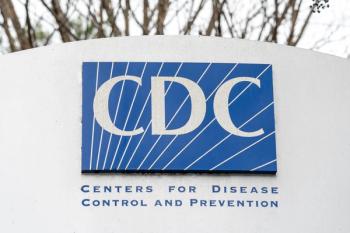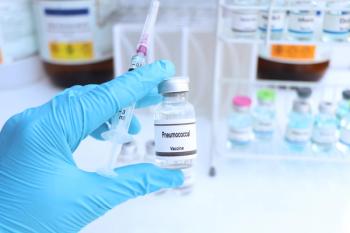
Allergic-Related Skin Diseases Significantly Increased Since 1990
Researchers explored the global disease burden of allergic-related skin diseases from 1990 to 2021 and projected future disease trends.
The global prevalence of allergic-related skin diseases has steadily increased since 1990, according to authors of a study published in World Allergy Organization Journal.1 Despite this increase, the burden of atopic dermatitis (AD) decreased throughout this time and is expected to continue its decline in the future.
“Allergic-related diseases are a serious and persistent public health issue worldwide, imposing a significant disease burden on various regions,” wrote authors of the study. “As an important component of allergic diseases, allergic-related skin diseases mainly consist of AD, urticaria, and contact dermatitis (CD).”
Of the allergic-related skin diseases, AD is one of the most prominent, impacting more than 204 million people globally, or 2.6% of the population.2 Not as prominent, urticaria was reported to impact 86 million people in 2017, which was around 1.1% of the population.3 CD, however, is significantly prominent and impacts up to 20% of children.4 However, compared to the aforementioned skin diseases, CD is much more manageable.
READ MORE:
A variety of previous studies have focused on allergy conditions as well as provided a sole focus on different skin conditions. But to the researchers’ knowledge, no reviews have been conducted specifically detailing allergic-related skin diseases. Aside from researchers’ goal of quantifying the burden from the previous 30 years of data, they also projected how the prominence of these diseases will progress forward.
“Understanding the disease burden caused by various types of allergic-related skin diseases, as well as the changes across spatial, year, age, gender, and the socio-demographic index (SDI) stratifications, is essential for shaping health policies and determining future clinical priorities,” they continued. “This study aims to analyze the incidence, prevalence, and disability-adjusted life years (DALYs) of allergic-related skin diseases globally, regionally, and nationally from 1990 to 2021.”
Using the Global Burden of Diseases database, researchers collected data from 204 countries and regions to record incidence, prevalence, and DALYs including their rates, numbers, and percentage changes throughout the 30-year study period. They then utilized the Bayesian Age-Period-Cohort (BAPC) model to predict the future disease burden for the next 15 years.
Starting with AD, rates increased overall from 1990 to 2021, reaching over 129 million cases in 2021. However, researchers identified a steady decrease in age-standardized prevalence (ASPR) and incidence (ASIR) rates for AD. With emerging therapies and AD’s long-term course of management for patients, these decreases could be owed to a global improvement in understanding of AD.
CD cases saw the largest increases throughout the study period and reached well over 253 million cases by 2021. Urticaria, however, reached 66.5 million cases.
“Over the next 15 years, the burden of allergic-related skin diseases is expected to remain significant,” they continued. “The BAPC model predicts that the ASIR, ASPR, and age-standardized disability-adjusted life year rates (ASDR) for urticaria and CD are unlikely to decrease significantly, with urticaria potentially even increasing. However, it is promising that the burden of AD is projected to decrease.”
Despite significant advancements in medicine and technology, these diseases continue to significantly impact patients worldwide and are expected to continue with these trends. While those advancements have led to symptom alleviation and significant improvements on patients’ quality of life, researchers agree that more needs to be done from a public policy standpoint to improve collective prevention strategies.
With projections of decreased AD rates and the BAPC model to inform future recommendations, there are promising developments in the future of the allergic-related skin disease space. Despite the current review providing an updated look at these ever-prominent diseases, challenges still remain in this space.
“This study provides a comprehensive analysis of the global burden of allergic-related skin diseases, including AD, urticaria, and CD, from 1990 to 2021. It reveals that although incidence and prevalence rates vary across regions and countries, the overall trends are generally consistent with previous research,” they concluded.1 “The treatment and prevention of allergic-related skin diseases still present challenges. It is crucial to focus on the epidemiological characteristics of different regions and countries, explore potential risk factors, and develop effective prevention and treatment strategies for different types of allergic-related skin diseases.”
READ MORE:
Pharmacy practice is always changing. Stay ahead of the curve: Sign up for our
References
1. Tang X, Lin L, Yu F, et al. Allergic-related skin diseases: global disease burden from 1990 to 2021 and future trends. World Allergy Organ J. 2025;18(7):101072. https://doi.org/10.1016/j.waojou.2025.101072
2. Tian J, Zhang D, Yang Y, et al. Global epidemiology of atopic dermatitis: a comprehensive systematic analysis and modelling study. Br J Dermatol. 2023 Dec 20;190(1):55-61. doi: 10.1093/bjd/ljad339.
3. Peck G, Hashim MJ, Shaughnessy C, et al. Global epidemiology of urticaria: increasing burden among children, females and low-income regions. Acta Derm Venereol. 2021 Apr 22;101(4):adv00433. doi: 10.2340/00015555-3796.
4. Litchman G, Nair PA, Atwater AR, et al. Contact dermatitis. StatPearls Publishing. September 4, 2023. Accessed July 11, 2025. https://www.ncbi.nlm.nih.gov/books/NBK459230/
Newsletter
Pharmacy practice is always changing. Stay ahead of the curve with the Drug Topics newsletter and get the latest drug information, industry trends, and patient care tips.






































































































































